This article is from the WeChat public account:Fei General Self-tour (ID: Ms-Flower-Flower), author: Ye Kefei, source: Ye Kefei, editor : Erdan, head picture from: Ye Kefei
Standing on the river bank with towering ancient trees behind, even if the sun is shining, it still feels cool . The water in front of me was calm, and there were occasional ripples when the wind picked up. In addition to the sound of birdsong, there were also the voices of tourists coming and going.

Panorama of Dam Bridge▲
This is Ganzhutan between Zuotan Village and Youtan Village, Longjiang Town, Shunde District, Foshan, Guangdong. It is the entrance of a tributary from the lower reaches of the Pearl River Xijiang to the Beijiang River. It used to be the gateway from Guangzhou to Jiangmen via Shunde. , Zhaoqing and other important waterways in western Guangdong. It is located at the southern end of Longjiang Town, bordering Jiujiang Town, Nanhai District, and across the river from Xinhui District and Heshan City in Jiangmen.
The tranquility and beauty in front of you have existed since ancient times. During the Qing Dynasty, Shunde County literati assessed the eight scenic spots in the county, and “Gantan Xue Tao” was among them. But it was also called the gate of hell because of the danger. “The boat will sink when it passes, the boat will overturn when it passes, and the myna will make a bend when it flies.”

Panorama of Dam Bridge▲
< p>
On January 1, 1971, Shunde County at that time started the project of renovating Ganzhutan and building Ganzhutan Hongchao Power Station. into a happy beach”. After the completion of Ganzhutan Power Station, it has the functions of power generation and flood control. It is known as one of the best projects in Guangdong in the 1970s.

Power Station▲
After 2000, due to the construction of the hydropower station in the upper reaches of the Xijiang River, the water volume decreased, and the Ganzhutan Hongchao Power Station also completed its historical mission in 2009. Today, the Ganzhutan Power Station in front of me has gone through the vicissitudes of life and has ushered in a new identity – attraction. It is the core part of Ganzhutan Museum District, and it can be strolled like a park. Behind it, there are a number of themed exhibition halls – the historical exhibition hall of the two major water conservancy projects of Ganzhutan Hongchao Power Station and the Central Valley Reclamation, the Sangyuanwei Historical Exhibition Hall, the Longjiang Ganzhu Art Exhibition Hall and the Longjiang History and Culture Exhibition Hall Exhibition hall, etc.
An “aged” hydroelectric plant, just reborn. The sections of history it records are therefore not annihilated, and become a glory that can be proclaimed and commemorated. Sangyuanwei, which is located in the Ganzhutan area, was built in the Northern Song Dynasty, and has nourished generations for thousands of years, was selected as the seventh batch of World Irrigation Engineering Heritage, becoming the first in China to take Jiwei water conservancy as the main body. It is also the first World Irrigation Engineering Heritage in Guangdong.
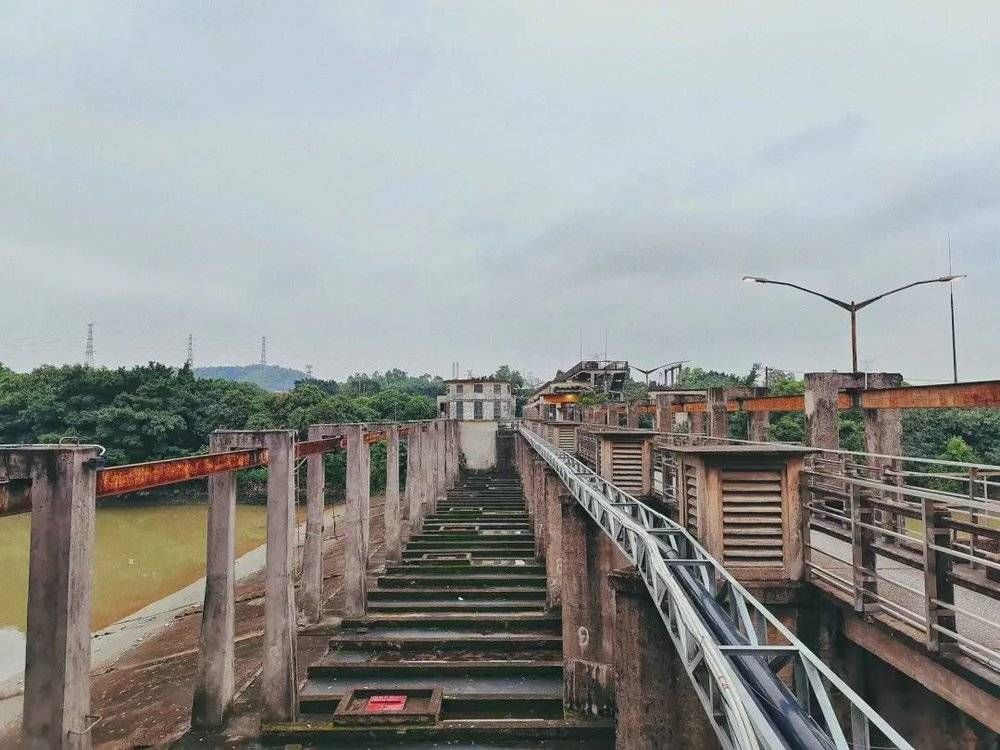
Panorama of the power station▲
< /p>
Ganzhutan Hongchao Power Station and Central Ditch Reclamation: Difficult Project
Drive Entering the Ganzhutan Hongchao Power Station Park, there are many old buildings in khaki, many of which are being repaired, and some are self-conscious and withered, and the front of the building is overgrown with weeds. There is a Soviet-style two-story residential building in the 1960s and 1970s, but the top is a southern Cantonese-style gray tile sloping roof. The courtyard is full of trees, and the branches climb up the roof along the building wall.
What is certain is that these abandoned old buildings will be the next transformation goals, just like the exhibition halls in front of them.

The building at the end of the dam bridge▲
Starting in 2018, Longjiang Town has begun to revitalize the power station park and gradually build it into a museum area. The core part is the water conservancy project and its exhibition hall.
In the exhibition hall, old archives, photos, and old objects show the hardships in the early stage of the project. Shunde in those days can be said to have contributed a single county to the project which took 3 years and 4 months.
In that era of planned economy, materials were relatively scarce and the circulation was very difficult. Shunde people thought of countless ways to collect the required materials. According to the information in the museum, in order to meet the demand for engineering steel at that time, the Shunde County Government used two or three trucks of fresh fish from Shunde Water Township to exchange a batch of steel at the Shaoguan Iron and Steel Plant. The ship lock was supposed to be cast with pig iron, but due to the shortage of materials, “reinforced concrete + branches” was finally used. In order to avoid water seepage, the construction workers also went to the barber shop to collect hair, and developed a “cement + hair” soil waterproof material by using the toughness of the hair.
Under such difficult conditions, the construction of Ganzhutan Power Station, which covers an area of 46,000 square meters, was completed and officially connected to the grid on May 1, 1974. Power generation, which solved 70% of the electricity consumption in Shunde County at that time. After the completion of the dam, it can prevent floods and ensure that the water route from Guangzhou to Jiangmen and Zhaoqing is open to navigation throughout the year, shortening the flight distance by 21 kilometers. It also regulates the flow of the Xijiang and Beijiang, lowers the downstream water level, and relieves the downstream flood pressure. What is even more commendable is that the drop of Ganzhutan is only 1 meter, so Ganzhutan Power Station is the first low-water power station in China.The hair power station is naturally the power station with the lowest power generation water level. At that time, there was no precedent in China to use such a small gap to generate electricity. After half a year of trial and error, the engineers designed a one-way tubular turbine equipped with “chrysanthemum-shaped” vanes, and finally completed the task.
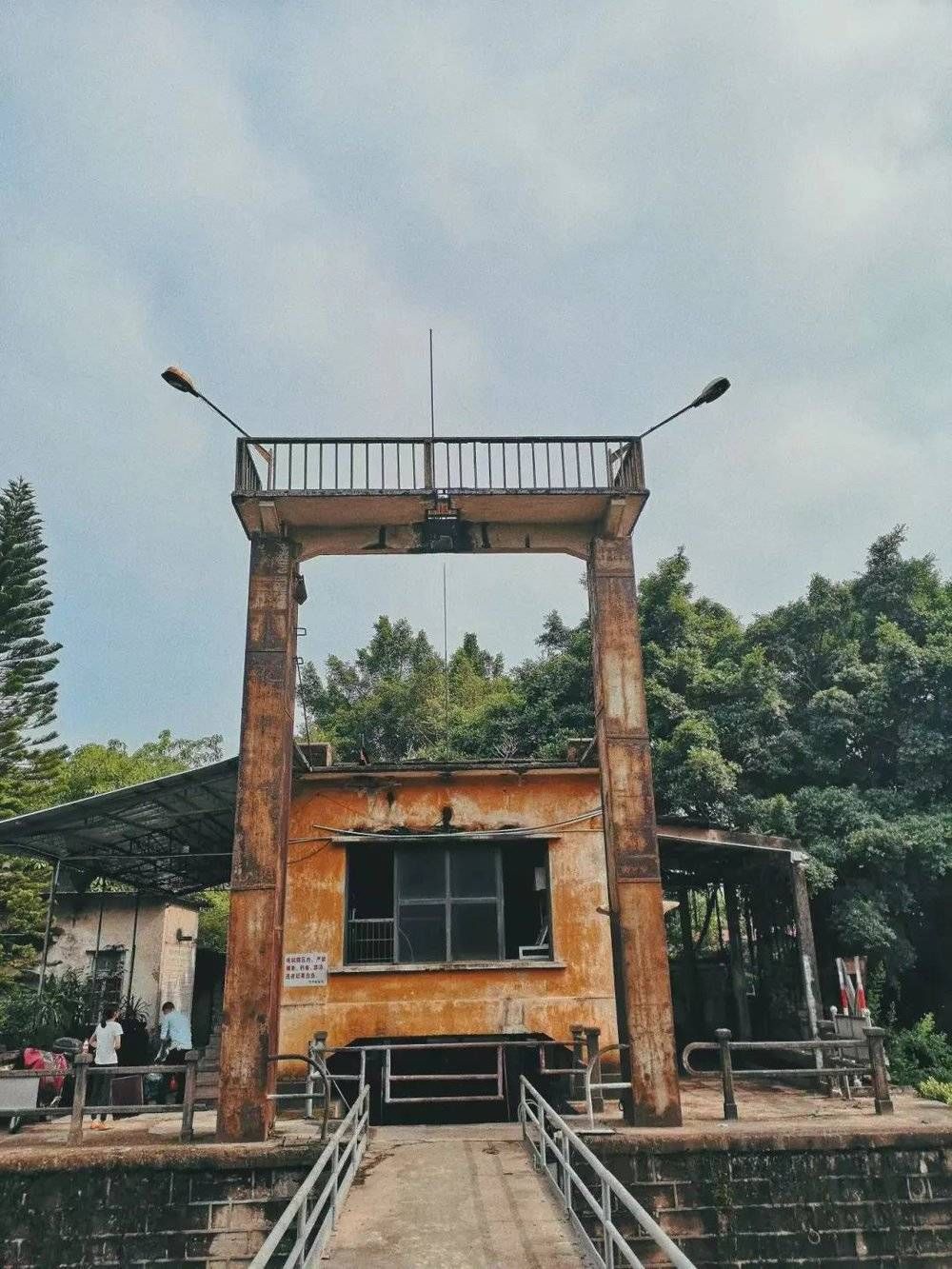
Ship lock▲
Come out from the exhibition hall, next to the dam built in the past. The bridge head is a symmetrical oval building, and the bridge road leads to the opposite bank. After more than 30 years of vicissitudes, the buildings and facilities of the power station have become outdated. The dam bridge, which is only more than one meter wide, is paved with concrete. Occasionally, motorcycles and bicycles pass by, making bursts of abnormal friction.
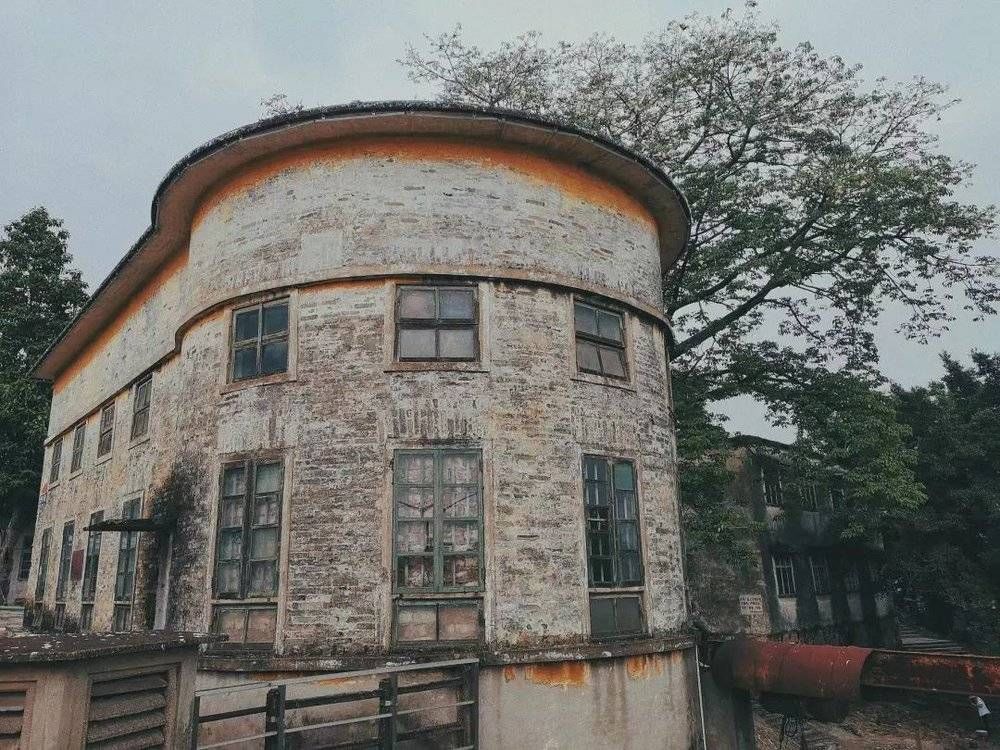
The old building at the bridgehead▲
Of course, there are more tourists. They came and went on the narrow dam bridge, next to the towering and rough dam body.
Despite decades of vicissitudes, the dam is still strong. At that time, there was no mixing equipment, and the concrete in front of him was mixed by hand.
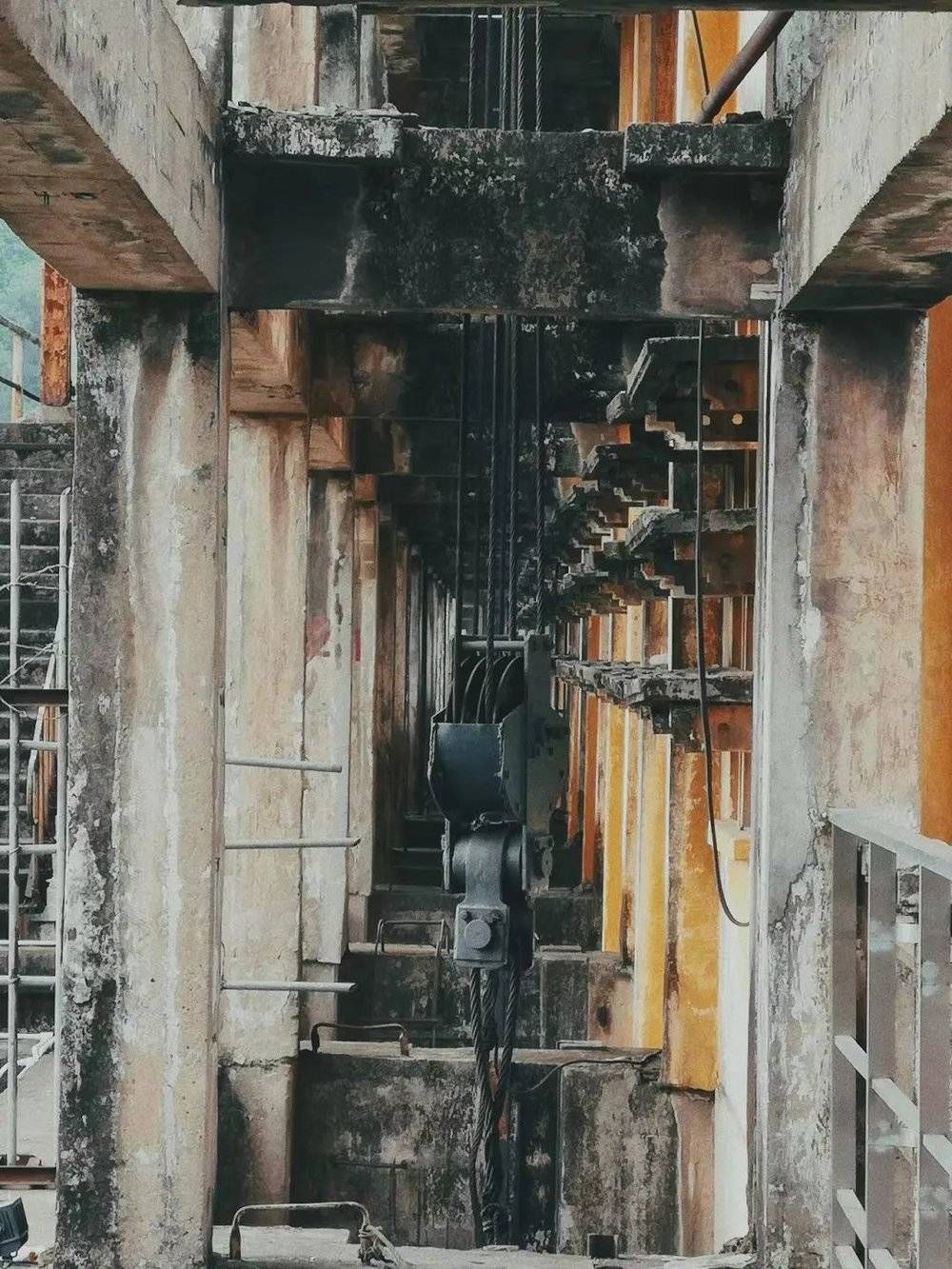
Old facilities and rusted▲
In addition to the tight construction schedule and heavy engineering volume, in that era of inconvenient transportation, shortage of materials and difficult transportation, tens of thousands of people gathered in Ganzhutan, and every day The problem of eating is a headache.
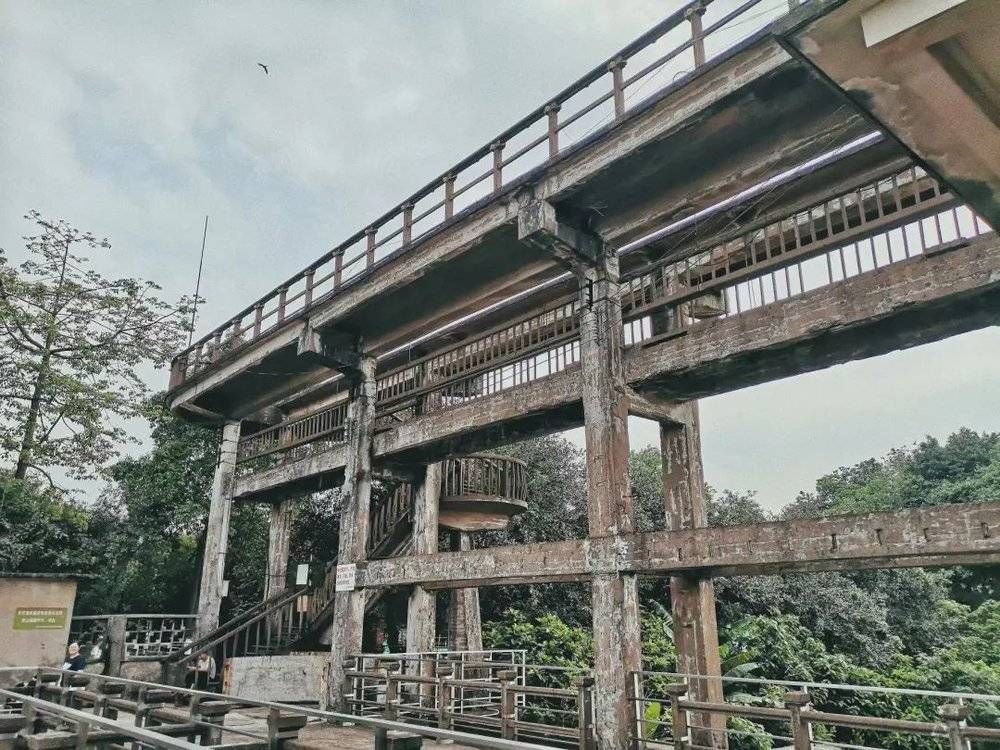
Old staircase of the power station▲
According to the recollection of the old workers, at that time, there were only rice and vegetables every day. For two cents, you can add a piece of fermented bean curd, and three cents can add two pieces. Once, a leader came to offer condolences and brought two boxes of canned luncheon meat and gave each person only a small bite, which made the workers who had never eaten lunch meat excited for many days. There is also an occasional dish that uses salted fish and steamed fatty pork without oil or salt, which is also a dish that the workers are thinking about.
The yellow irregular building next to the dam bridge is an old power station. Through the windows one by one, the interior can be vaguely seen. At the end of the dam body, there are towering aisles layer by layer. In the old days, workers could walk up the aisle along the stairs to carry out various operations. Although it has been discontinued, the old steel cables, hanging wheels, etc. are still well preserved, extending between the rough concrete stone pillars.

Old windows of the power station▲
At the end of the dam bridge is a small island with lush trees, quiet and pleasant. You can vaguely see the old basketball court and a row of abandoned bungalows, which used to be the dormitories of power station workers. Going forward is the ship lock of the power station. If you have seen Gezhouba, you will know that the ship lock here is similar to the principle. There is a gate at each end of the waterway, one side of which is opened to enter the boat to release water, and the other side of the gate is opened to release the boat when the water level becomes flat. A small boat was parked in the lock, and the water was calm.
From dam bridges, power stations to ship locks, from large generator sets, milling machines, three-meter blades of water turbines to small screws, everything in Ganzhutan Power Station is Made in Shunde. In that era of scarcity of resources and backward technology, Shunde people achieved full autonomy from design to construction, from manufacturing equipment to installation.
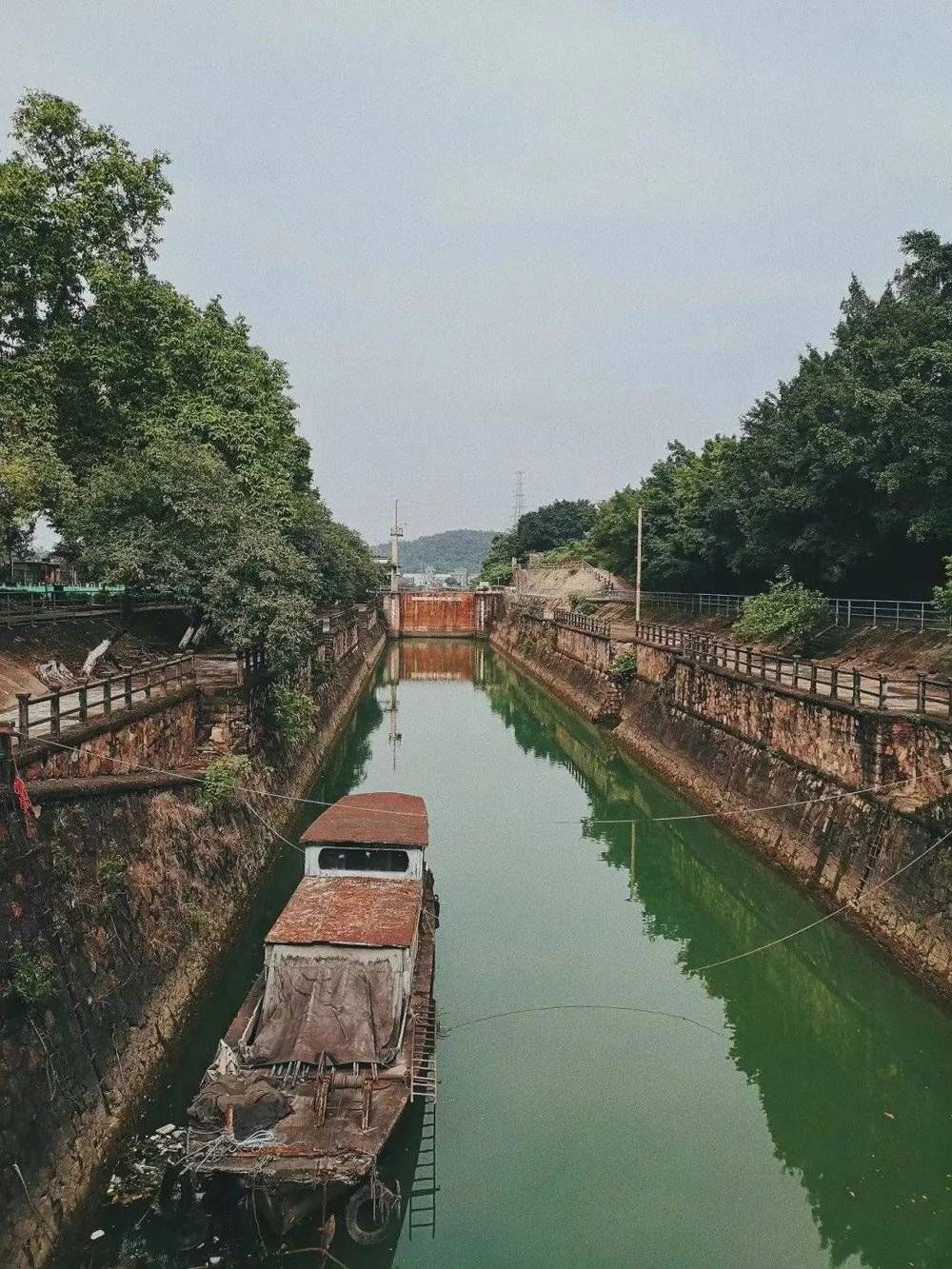
The waterway between the locks▲
This article is from the WeChat public account:Fei General Self-tour (ID: Ms-Flower-Flower), author: Ye Kefei, source: Ye Kefei, editor: Erdan